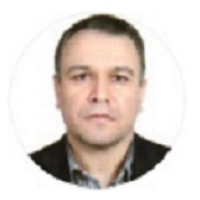The Combining of Terrestrial Laser Scanning and Close Range Photogrammetry Data by Projection Matrix to Produce 3D Models with True Textures
Author(s):
Abstract:
Nowadays the generation of a three-dimensional (3D) model is mainly achieved using non-contact systems based on light waves, in particular using active or passive sensors. We can currently distinguish four alternative methods for object and scene modeling: (i) image-based rendering, which does not include the generation of a geometric 3D model but, it might be considered a good technique for the generation of virtual views; (ii) image-based modeling (e.g. photogrammetry), the widely used method for geometric surfaces of architectural objects, precise terrain and city modeling as well as Cultural Heritage documentation; (iii) range-based modeling (e.g. laser scanning), which is becoming a very common approach for the scientific community but also for non-expert users such as Cultural Heritage professionals; (iv) combination of image- and range-based modeling, as they both have advantages and disadvantages and their integration can allow the generation of complete and detailed 3D models efficiently and quickly. Moreover, 3D models of outdoors objects by means of terrestrial laser scanner (TLS) point clouds has been one of the most important and reliable technical methods. However, TLS point clouds have two main drawbacks. They dont have sufficient information about the object texture, and sometimes a complete perspective of the facades cannot be obtained due to irregular circumstances. Advances in both TLS hardware and photogrammetric solutions combined are creating increasingly more precise and rich 3D colored models. The combining of close-range photogrammetry and TLS data have been shown to be effective and accurate techniques for the 3-dimensional documentation of complex buildings and sites, which is considered, by many institutions and organizations. In this paper the 3D model generation of two historical building based on the combination of two different surveying techniques has been presented. The main goal of the work was to merge in a unique result data derived from close-range photogrammetry and from TLS in such a way that the final model could be seamlessly explored. Close range photogrammetry and Laser scan, complementary, and combine their data in most applications is increasingly common. Laser scanner while collecting 3D data, are able to produce images of texture mapping applications, but for some reason these images cannot be used. Texture images separately with good quality, at the suitable time and the appropriate conditions are provided using the principles of photogrammetry. This paper explores the projection matrix method is a comprehensive reconstruction of ancient buildings. This research is a case study on two series of real data from our ancient monuments, Abarkooh dome in Yazd province and stone bridge of Lorestan, which can be used to provide documentation verifying in national or international scale and three-dimensional modeling to be used for different purposes. In this study along with projection matrix method, other mathematical models were examined using multiple texture images for produce 3D models with true textures. The use of multiple texture images improved quality, geometry and accuracy of the results in texture mapping. The results indicated that the errors and distortions of RGB colors, is depends to the accuracy of the measurement in the space of the image and cloud points and the mathematical models. Also, check average of errors in the two transverse and longitudinal coordinates, indicating the projection matrix method was suitable in compared to other methods. In general, the projection matrix method is computationally more easily and geometrically more accurate than other models which is tested in this study. The values of errors in the projection matrix method are 0.15 and 0.33 (pixel) in the stone bridge of Lorestan and -4.24E-13 and 7.67E-14 in the Abarkooh dome in pixel units, respectively. In contrast, the errors of iterative direct linear transformation method are -2.38 and -5.79 E-10 for the first point clouds and 5.40E-5 and 3.64E-5 in pixel units for the second point clouds, respectively. Therefore, the main advantage of the projection matrix method is that it requires no initial values and it operated as matrix multiplication for producing three-dimensional models with realistic textures that is recommended as a stable method.
Keywords:
Language:
Persian
Published:
Geospatial Engineering Journal, Volume:7 Issue: 2, 2016
Pages:
71 to 86
magiran.com/p1547065
دانلود و مطالعه متن این مقاله با یکی از روشهای زیر امکان پذیر است:
اشتراک شخصی
با عضویت و پرداخت آنلاین حق اشتراک یکساله به مبلغ 1,390,000ريال میتوانید 70 عنوان مطلب دانلود کنید!
اشتراک سازمانی
به کتابخانه دانشگاه یا محل کار خود پیشنهاد کنید تا اشتراک سازمانی این پایگاه را برای دسترسی نامحدود همه کاربران به متن مطالب تهیه نمایند!
توجه!
- حق عضویت دریافتی صرف حمایت از نشریات عضو و نگهداری، تکمیل و توسعه مگیران میشود.
- پرداخت حق اشتراک و دانلود مقالات اجازه بازنشر آن در سایر رسانههای چاپی و دیجیتال را به کاربر نمیدهد.
In order to view content subscription is required
Personal subscription
Subscribe magiran.com for 70 € euros via PayPal and download 70 articles during a year.
Organization subscription
Please contact us to subscribe your university or library for unlimited access!


